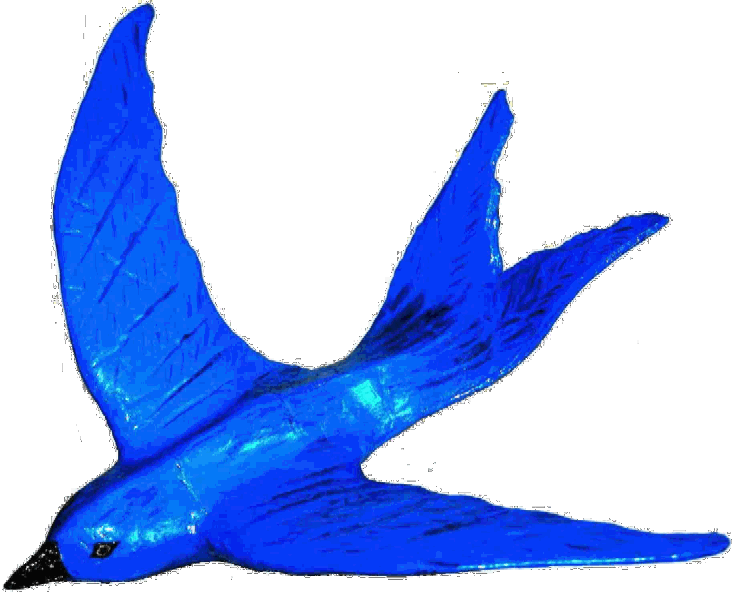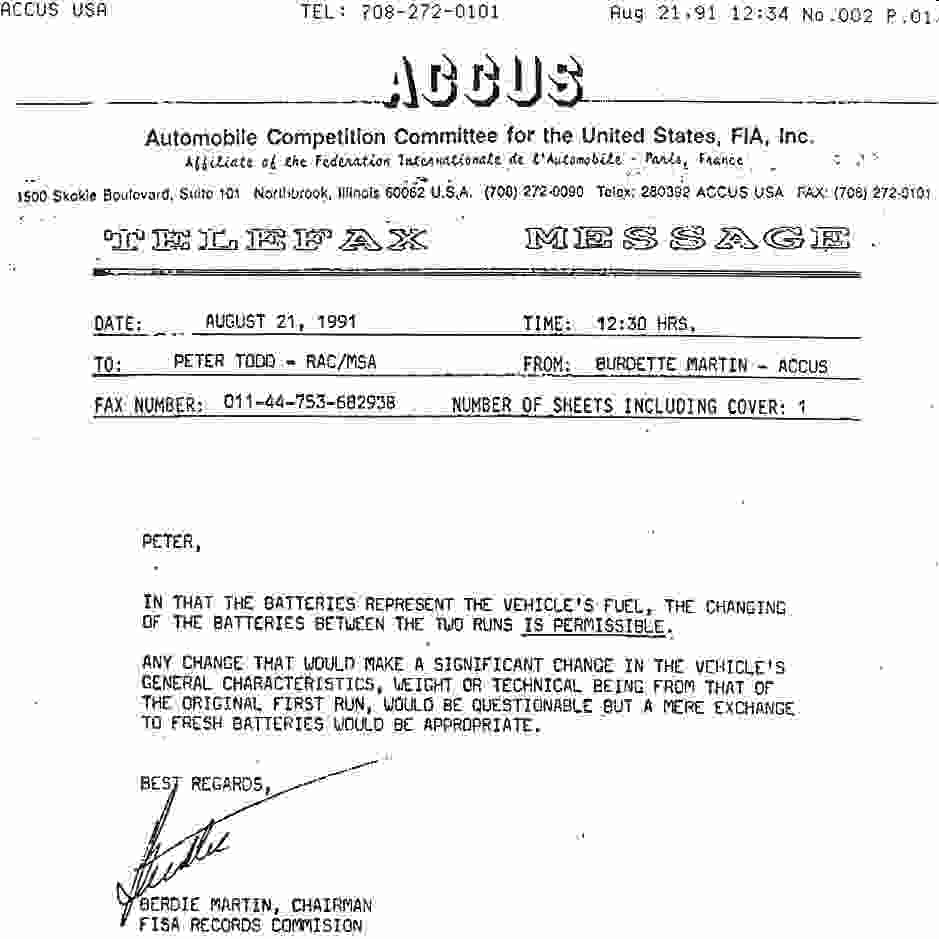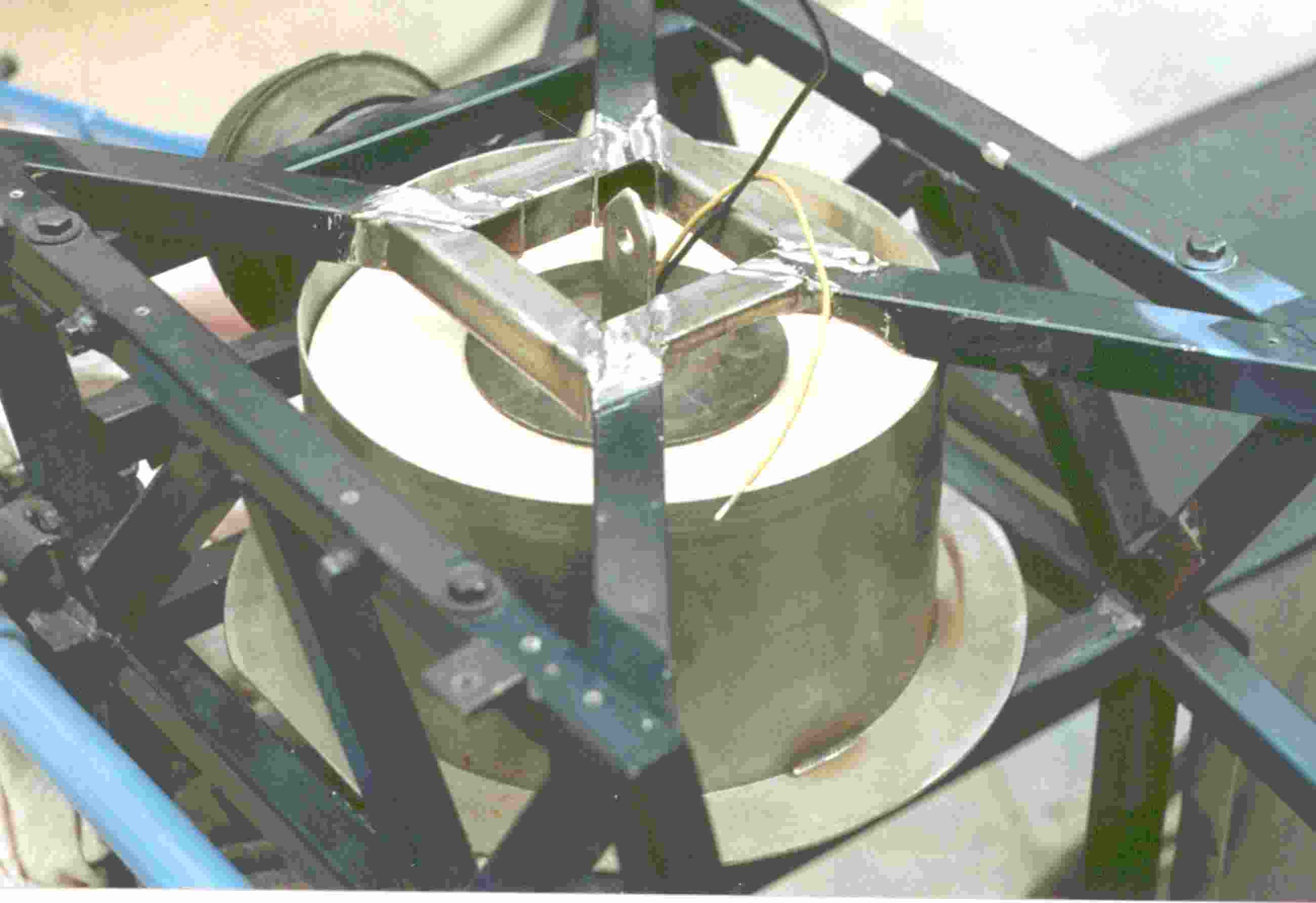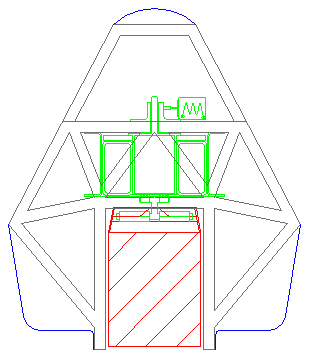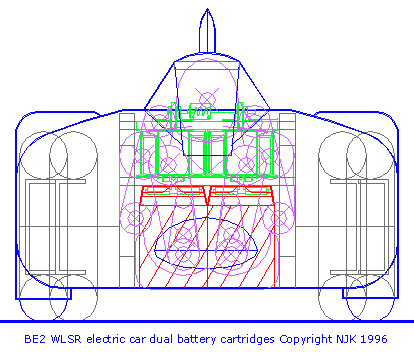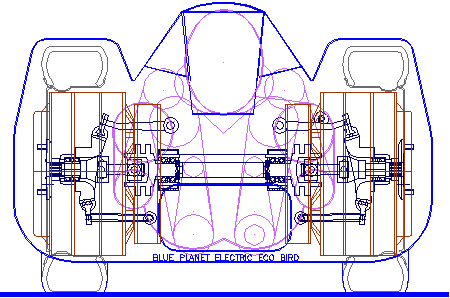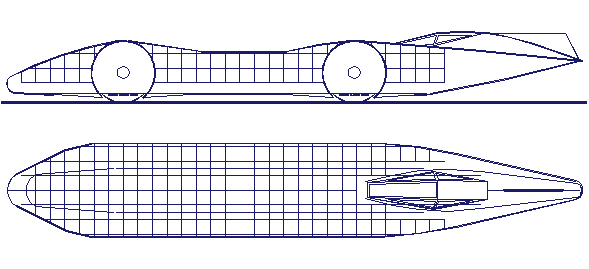|
A.C.C.U.S.
|
|
|||||||||||||||||||||||||||||||||||||||||||||||||||||||||||||||||||||||||||||||||||||||||||||||||||||||||
|
HOME | AUTOMOTIVE | BLUEPLANET | ELECTRIC CARS | FORMULA E | ENERGY | INSURANCE | INDEX | SOLAR CARS |
||||||||||||||||||||||||||||||||||||||||||||||||||||||||||||||||||||||||||||||||||||||||||||||||||||||||||
|
The letter below from the 'Automobile Competition Committee for the United States' to the Royal Automobile Club, dated 21 August 1991, confirmed that Nelson's battery cartridge exchange system is permissible under the FIA's racing rules and was admitted as refueling.
By this time the battery loading mechanism had been tested to handle the significant mass of the battery cartridges. It was possible to unload one cartridge and reload a replacement in under 2 minutes back in 1996. The refueling time was dependent on the type of servo used. BE1 used pneumatic servo loaders built into and part of the vehicles frame. Subsequently a Rover was converted to accept a similar battery cartridge, but fitted with a flat electro-mechanical system. Although the mechanism was slower in the expel/intake modes, improvements in the locking mechanism meant that exchanges were still accomplished in around 2 minutes.
That is the kind of speed necessary to satisfy customers at filling station forecourts, and it is the speed of the system coupled with the low operational costs of an EV, that we think will eventually see it being incorporated in production vehicles.
An electric land speed record car that refuels itself by changing battery packs between each run - charged by solar power.
DESIGN EVOLUTION
From
the original (historic first) battery cartridge system of the 1990s, the
latest cartridge refueling systems have come a long way. The original
system illustrated above was suitable for cars which had the height to
incorporate a tall loading servo, such as the BE1. This was replaced
with a flat-pack electric motor servo for a rover-metro conversion
demonstrator (chassis still available for research partners
information). For the future, it is necessary to standardize battery cartridges for compatibility, or other vehicles may not share system components. BE1, BE2 and BE3 are capable of utilizing the same cartridge pictured above. This cartridge may be configured for many different voltages and storage medium. BE1 was designed to use lead-acid batteries to keep costs down. The total development cost of the BE1 was in the region of £39,000, including a dedicated charger. A small price to pay for a world record contender that reached 90 mph using just 20kW motors - slightly strained, and eventually made it to 160mph with more power!
During the development of the BE2 the design bounced from Lead-Acid to Nickel-Cadmium, then quickly to Nickel-Metal-Hydride. The move to NiMh still meant that the car needed a bigger cartridge to supply the increasingly more powerful motors, and this is seen in the BE2 design drawings from 1996/7 below.
The BE1 EV battery cartridge exchange system: end view showing one NiCd battery cartridge and one load servo directly above.
The BE2 was designed for NiCd and NiMh batteries, so needed a large volume to store sufficient power, compared to Lithium, which also increased the frontal area of the car - compared to the BE3 below - which is a much more compact design. Note also, the offset tracks of the BE2 above.
The BE3 racing car can refuel in around 2 minutes by expelling one battery cartridge and replacing it with another. It does not need a complicated service station to do this. It does it with built-in load servos - so that is can turn around on the Salt Flats at Bonneville, completely recharged ready for the best of three runs. Don't you wish your EV could do that? It does not use the servo cartridge loading system seen in either the BE1 or BE2 designs. Formula E racing would be much faster using battery cartridge exchange during pit stops.
The new Lithium Polymer cells and the fall in price have changed the game. The same volume cartridge will now propel the BE3 seen below at speeds of 350+mph, so that the $ per mph ratio will improve significantly. By way of example, many solar powered electric cars use Worley Polymer cells now offering (190Wh/kg).
The Ecostar team are looking for corporate sponsors and collaborative research partners. If your company or academic organisation would like work with our group on the BE3 project, the new management team would like to hear from you.
+44 (0) 1323 831727 +44 (0) 7842 607865
THE BLUE BIRDS OF HAPPINESS
Probably the world's fastest solar powered Eco electric car: 350mph + This car's batteries are charged using natural solar energy. A green eco sporting event - looking for sponsorship for 2015/2016. Chasing the blue bird of clean air happiness - Maurice Maeterlinck.
ENERGY GENERATING-DISTRIBUTION UTILITIES
|
||||||||||||||||||||||||||||||||||||||||||||||||||||||||||||||||||||||||||||||||||||||||||||||||||||||||||
|
BLUEPLANET BE3 | EDUCATION | ELECTRIC CYCLES | SOLARNAVIGATOR |
||||||||||||||||||||||||||||||||||||||||||||||||||||||||||||||||||||||||||||||||||||||||||||||||||||||||||
|
The
content of this website is copyright © 1991 and 2013 Electrick
Publications. All rights reserved. The bluebird logo |
||||||||||||||||||||||||||||||||||||||||||||||||||||||||||||||||||||||||||||||||||||||||||||||||||||||||||
